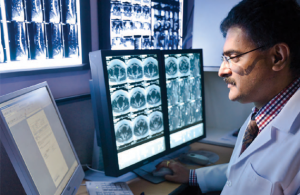Rising clinical and FDA regulatory standards:
The constantly evolving regulations on the security, privacy, reliability and safety of medical devices have had a significant impact on the internal process and thus the profitability of the medical devices manufacturers. This has also demotivated the investors thus stemming the investment in the medical devices sector thus making it difficult for the organizations to raise funds.
Increased R&D expenses:
The increased complexity, sophistication and personalization of devices have led to increase in the R&D expenses.
Increased competition:
With the emergence of various start-ups and spin-offs has led to a tighter competition thus inviting the quest for being better in whatever way possible to outrun the competitors. This extreme competition has led to an undue pressure on the profit margins of the manufacturers thus engendering the need for reducing costs to offset the margin pressures.
Diverse customer expectations:
Diverse choices and need for personalized devices have led to increased demands from the manufacturers thus making them redesign their models and SLA’s. Customers are demanding more out of their reduced capital and expense budgets and asking for greater incentives.
Speed up new product introduction (NPI):
The intentions of NPI efforts are to reduce the traditional headaches involved with new product launches. For mid-sized organizations the NPI is essential to ingress the markets with new products thus ramping up profit margins.
Teamcenter® The ideal PLM solution to all the challenges
Increase Efficiency, Reduce Time-to-market:
Teamcenter® enables companies to fully trace all activities from concept to retirement by automatically linking compliance requirements with engineering and specification data. The solution combines compliance management, traceability and reporting capabilities to help medical devices manufacturers address strict quality and regulatory requirements, increasing competition and demanding time-to-market pressures.
Teamcenter® for Medical Devices facilitates comprehensive program lifecycle management, which in turn results in faster design cycles, accelerated time to regulatory agency approval, fewer design and submittal iterations and lower costs for design, development, manufacturing, testing and tracing. Teamcenter® facilitates this strategic approach by tracking all of the product data that pertains to product development activities performed by a medical devices OEM and its suppliers. By integrating compliance management into a complete product lifecycle, Teamcenter® virtually eliminates manual data entry, improves data accuracy and reduces the costs of both compliance and non-compliance.
Speed PLM Implementation for Medical Device Design and Manufacturing:
Adhering to the necessary regulations and still being able to meet accelerating production rates and achieve speed-to-market can, at first glance, appear virtually impossible. The Siemens PLM Software Integrated Quality solution effectively and efficiently assists medical device companies in the implementation of intelligent manufacturing and design processes. The Integrated Quality solution provides a platform that allows you to increase quality; reduce risk; create alignment between requirements, product and manufacturing specifications, and production targets; while demonstrating compliance with industry quality standards. The medical devices (MD) catalyst accelerates time-to-value for implementing key elements of our Integrated Quality solution, while providing an environment for swift adoption of future software and technologies.
Effective device data management through intelligent software implementation:
With ready-made, pre-configured templates for automated workflows, the MD catalyst offers medical device companies the ability to electronically and securely catalogue, manage and utilize design history files (DHFs) and device master records (DMR). This advanced medical device data management system speeds the design and manufacturing processes, while also helping eliminate overall complexity.
Personalized Product Innovation:
Personalized Product Innovation is the Siemens PLM Software perspective on how medical device companies can provide support for personalized medical devices to complement their build-to-stock business. Our solutions for automating the image to implant process support Personalized Product Innovation by enabling a highly automated process for medical device companies to develop personalized medical devices and therapies. Beginning with a MRI or CT image of patient anatomy, and ending with personalized medical devices, our integrated product lifecycle management (PLM) platform and applications help you achieve speed and accuracy along the entire process chain.
Quality by Design is the Siemens PLM Software perspective on how companies can take a more insightful, modern approach to ensuring medical device quality management by identifying and resolving quality issues as early as possible in the product design and manufacturing processes. This integrated Quality solution has raised the standards in software innovation for quality data and analytics management throughout the product lifecycle processes, as well as in the ultimate quest for the safest, most effective medical devices.
This balanced approach towards design and manufacturing quality supports faster production rates, significant reduction in cost of goods, and heightened levels of innovation. This all comes while still maintaining the highest levels of quality and safety associated with every device produced. By embedding quality data and analytics across all phases of product design and development, along with the core corrective and preventative actions (CAPA) and change control processes, true product innovation within the medical device community is a reality.
Maintaining the status quo and minimum regulatory standards are no longer effective quality control processes:
In today’s global marketplace, medical device manufacturers are challenged to maintain quality controls consistently across all operations. Demand has increased for both product complexity and personalized product designs, so quality control processes are also becoming significantly more complex in terms of implementation and management. With established, early-stage regulatory systems checks that are executed in conjunction with best-in-class engineering practices, medical device quality has quickly become much more than ensuring minimum safety standards. Critical-to-quality (CTQ) processes and systems are increasing in importance and must now be adopted for proactive quality assurance, in addition to the traditional, more reactive methods.

